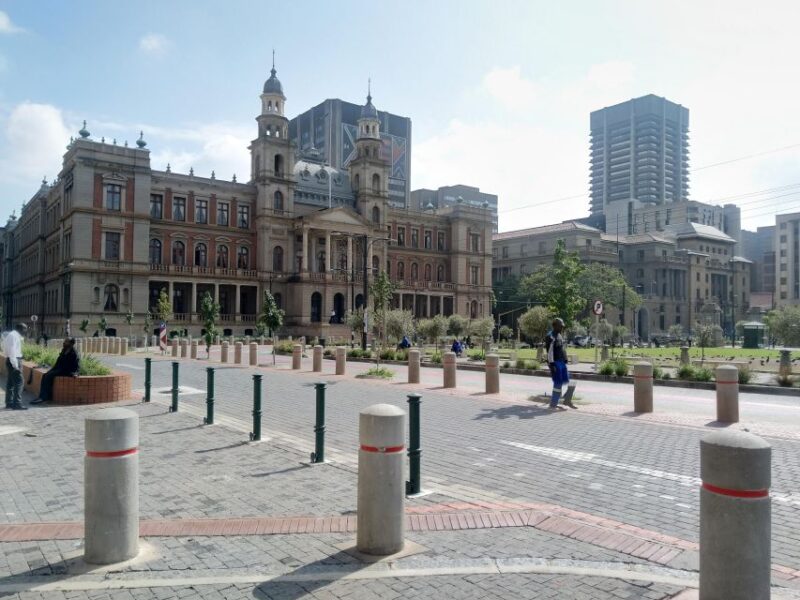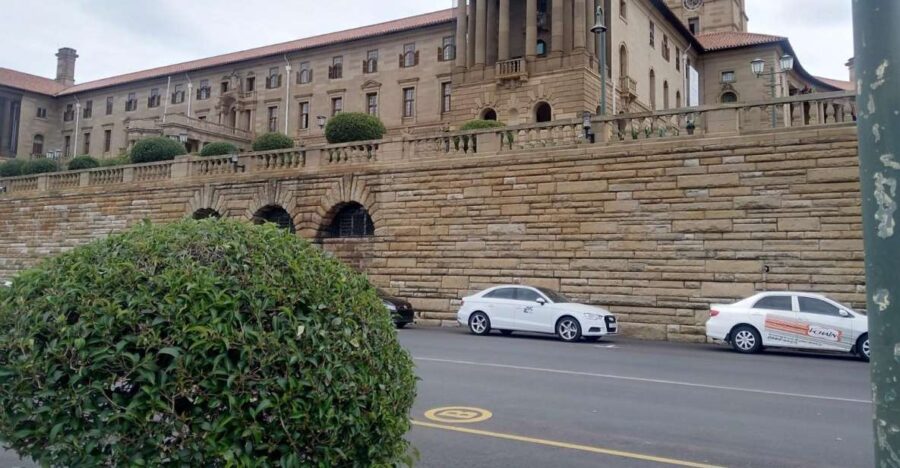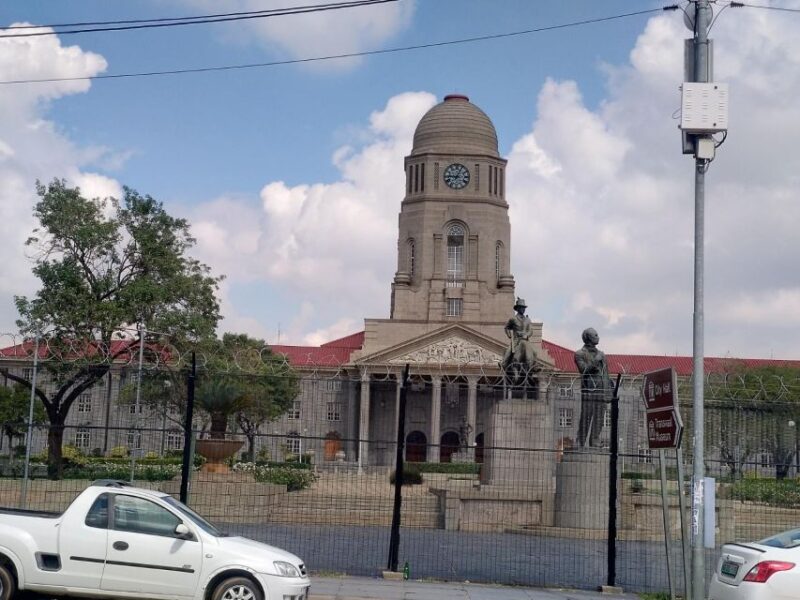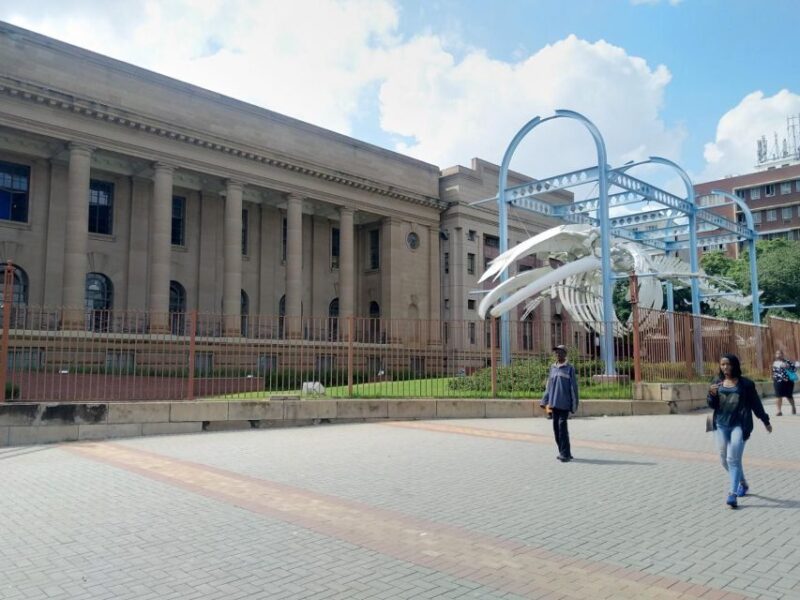South Africa’s three major cities – Pretoria, Soweto, and Johannesburg – offer a captivating blend of colonial architecture, anti-apartheid history, and vibrant modern culture. Visitors can explore Pretoria’s grand Voortrekker Monument, discover Soweto’s legacy of resistance, and experience Johannesburg’s dynamic neighborhoods. Whether you’re interested in South Africa’s tumultuous past or its thriving present, these three cities provide a compelling gateway to understanding the country’s rich tapestry. The journey ahead promises to be both enlightening and unforgettable.
Good To Know

- Pretoria’s colonial architecture, including the Voortrekker Monument and Union Buildings, reflect its history as South Africa’s administrative capital.
- Soweto is a pivotal township in South Africa’s history, home to the 1976 student uprisings and the residences of Nelson Mandela and Desmond Tutu.
- Johannesburg is a dynamic city blending culture, commerce, and diverse neighborhoods, with landmarks like the Nelson Mandela Bridge and Constitution Hill.
- The Voortrekker Monument and Union Buildings in Pretoria provide insights into the complex past and rich history of the region.
- Exploring Mandela’s legacy, from the Hector Pieterson Museum to Vilakazi Street, offers a deeper understanding of South Africa’s anti-apartheid movement.
Colonial Architecture of Pretoria

Pretoria’s colonial architecture reflects its heritage as the administrative capital of South Africa.
The Voortrekker Monument, a towering granite structure, honors the Afrikaner pioneers.
The Union Buildings, with their distinctive domes, were the seat of government during the apartheid era.
Church Square, lined with historical buildings, showcases the influence of both British and Dutch colonial styles.
Melrose House, a Victorian-era mansion, provides a glimpse into the lives of the elite.
These architectural gems offer visitors a window into Pretoria’s past, blending the divergent cultural legacies that have shaped the city’s identity over time.
You can also read our reviews of more tours and experiences in Pretoria.
Discovering Soweto’s Cultural Richness

Visitors can step into the vibrant heart of Soweto, a township that has played a pivotal role in South Africa’s history. This cultural experience offers a glimpse into the daily life and struggles of the local community.
Explore the Hector Pieterson Museum, a memorial to the student uprisings of 1976, and discover the significance of Vilakazi Street, where both Nelson Mandela and Desmond Tutu once lived.
Wander through the bustling markets, savor local cuisine, and engage with the warm and resilient people who call Soweto home.
This immersive journey provides a powerful and authentic understanding of Soweto’s enduring spirit and its vital place in the nation’s narrative.
Johannesburg: City of Gold

From the vibrant townships of Soweto, the tour ventures to the city of Johannesburg, known as the "City of Gold." Johannesburg boasts a dynamic blend of culture, commerce, and tranquil suburban enclaves. Visitors can explore the city’s landmarks, including the Johannesburg Stock Exchange, Nelson Mandela Bridge, and the impressive Constitution Hill. The city’s diversity is reflected in its cuisine, with a range of international and local flavors to savor.
| Landmark | Description |
|---|---|
| Johannesburg Stock Exchange | Africa’s largest stock exchange |
| Nelson Mandela Bridge | Iconic bridge symbolizing unity |
| Constitution Hill | Former prison, now a human rights museum |
| Neighborhoods | Vibrant, trendy districts like Maboneng and Braamfontein |
| Cuisine | Diverse culinary scene, from traditional to fusion |
Voortrekker Monument and Union Buildings
The Voortrekker Monument, a striking granite structure, stands as a testament to the history and legacy of the Afrikaner people. This imposing memorial commemorates the Great Trek, a pivotal migration of Boer settlers from the Cape Colony in the 19th century.
Visitors can explore the monument’s detailed frieze panels depicting the trekkers’ journey, as well as the impressive dome and panoramic views from the top.
Nearby, the Union Buildings, the official seat of the South African government, showcase impressive Edwardian architecture and landscaped gardens.
These two sites offer a glimpse into Pretoria’s rich history and the country’s complex past.
More Great Tours NearbyExploring Mandela’s Legacy

One can’t fully grasp the rich history of South Africa without exploring the legacy of Nelson Mandela. The tour visits the Mandela House Museum, which was the former residence of the iconic leader. Visitors can learn about Mandela’s life and his pivotal role in the anti-apartheid movement.
The Hector Peterson Museum and Memorial, named after a young student killed during the 1976 Soweto Uprising, provides profound insights into the struggle for freedom.
Traversing Vilakazi Street, where both Mandela and Archbishop Desmond Tutu lived, offers a chance to walk in the footsteps of these revered figures.
Immersing oneself in these significant sites deepens the understanding of South Africa’s complex past and Mandela’s enduring impact.
Vilakazi Street and 1976 Uprisings
Vilakazi Street, located in the vibrant township of Soweto, holds immense historical significance. It was the site of the 1976 Soweto Uprising, a pivotal moment in the anti-apartheid struggle.
On this street, protestors marched against the imposition of Afrikaans as the language of instruction in black schools, sparking a nationwide revolt.
Today, Vilakazi Street is a hub of activity, with museums, restaurants, and cultural attractions honoring the area’s rich history. Visitors can explore the Hector Pieterson Memorial and Museum, which commemorates the students who lost their lives during the uprising.
This powerful site offers a poignant reminder of the sacrifices made in the fight for freedom and equality.
Landmarks and Neighborhoods
Across Pretoria, visitors find an array of architectural wonders reflecting the city’s colonial past. From the grand Union Buildings, the official seat of the South African government, to the imposing Voortrekker Monument honoring the Afrikaner pioneers, the city’s landmarks showcase its diverse heritage.
In Johannesburg, the vibrant neighborhoods of the city offer a glimpse into its dynamic culture. The Melrose House Museum, a Victorian-era mansion, provides a window into the city’s history.
The Baragwanath taxi rank, one of the largest in the world, buzzes with activity, while the quiet suburbs around Bishop Desmond Tutu’s residence offer a peaceful respite.
These landmarks and neighborhoods capture the multifaceted essence of Pretoria, Soweto, and Johannesburg.
Tour Logistics and Feedback
The tour provides a live English and French-speaking guide to lead the small group of up to 10 participants. This ensures a personalized experience and allows for easy communication.
The tour is also wheelchair accessible, making it inclusive for all travelers. Based on the positive customer feedback, the tour seems to be well-received by various types of travelers, including couples, friends, solo explorers, and families.
With an overall rating of 5/5, the tour appears to deliver an exceptional experience that showcases the rich history, culture, and landmarks of Pretoria, Soweto, and Johannesburg.
Travelers can also benefit from the flexible cancellation policy and the option to reserve their spot without upfront payment.
Frequently Asked Questions
What Is the Tour Guide’s Language Proficiency?
The tour guide is proficient in English and French, offering live commentary throughout the 8-hour tour. This ensures all participants can fully engage and understand the cultural and historical insights shared.
Is Transportation Included in the Tour Price?
The tour price includes transportation. Participants will be transported throughout the tour via a small group vehicle, with a live tour guide available in English and French.
Can the Tour Accommodate Dietary Restrictions?
The tour can accommodate dietary restrictions. Travelers with specific dietary needs should notify the tour operator in advance, who will work to ensure their requirements are met during the tour.
How Long Is the Walking Portion of the Tour?
The walking portion of the tour lasts approximately 2-3 hours, with stops at key historical and cultural sites in Soweto and Johannesburg. Participants should wear comfortable shoes and be prepared for light to moderate walking.
Are Photographs Allowed at All Sites Visited?
Yes, photography is generally allowed at the key sites and attractions visited during the tour. However, visitors should always check with the tour guide or on-site staff for any specific restrictions or requirements before taking photos.
The Sum Up
Pretoria, Soweto, and Johannesburg offer visitors a comprehensive understanding of South Africa’s history and culture. Exploring the colonial architecture in Pretoria, the anti-apartheid legacy in Soweto, and the vibrant commerce of Johannesburg provides an immersive experience. With insightful tours and accessible logistics, travelers can discover the diverse tapestry that makes these cities the heart of the nation.
You can check availability for your dates here:More Tour Reviews in Pretoria
- Johannesburg: Pretoria and Soweto via Apartheid Museum
- Johannesburg and PTA: Soweto and Apartheid Museum Day Tour
- Soweto Township Tour From Pretoria, Centurion & Midrand Every FRIDAY Morning
- Johannesburg & Pretoria Photo Tour
- Rietvlei Nature Reserve Half-Day Tour From Pretoria, Every TUESDAY
- Pretoria: Lion and Cheetah Sanctuary Game Drive
Not for you? Here's more nearby things to do in Pretoria we have reviewed
- Johannesburg: Pretoria and Soweto via Apartheid Museum
- Johannesburg and PTA: Soweto and Apartheid Museum Day Tour
- Soweto Township Tour From Pretoria, Centurion & Midrand Every FRIDAY Morning
- Johannesburg & Pretoria Photo Tour
- Rietvlei Nature Reserve Half-Day Tour From Pretoria, Every TUESDAY
- Pretoria: Lion and Cheetah Sanctuary Game Drive
- Lesedi Cultural Village & Cradle of Humankind
- Journey Through Time: Johannesburg to Pretoria
- Soweto and Johannesburg Fun Tours
- 3 Hour Pilanesberg Open Vehicle Game Drive
- Airport Transport And Return
- Pretoria City Tour
